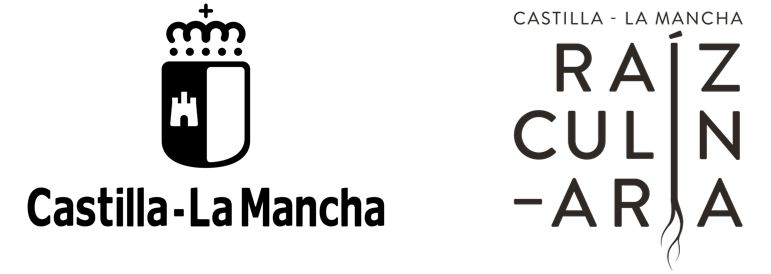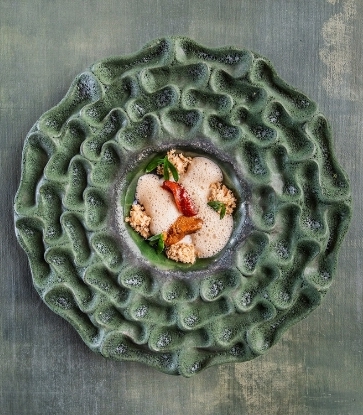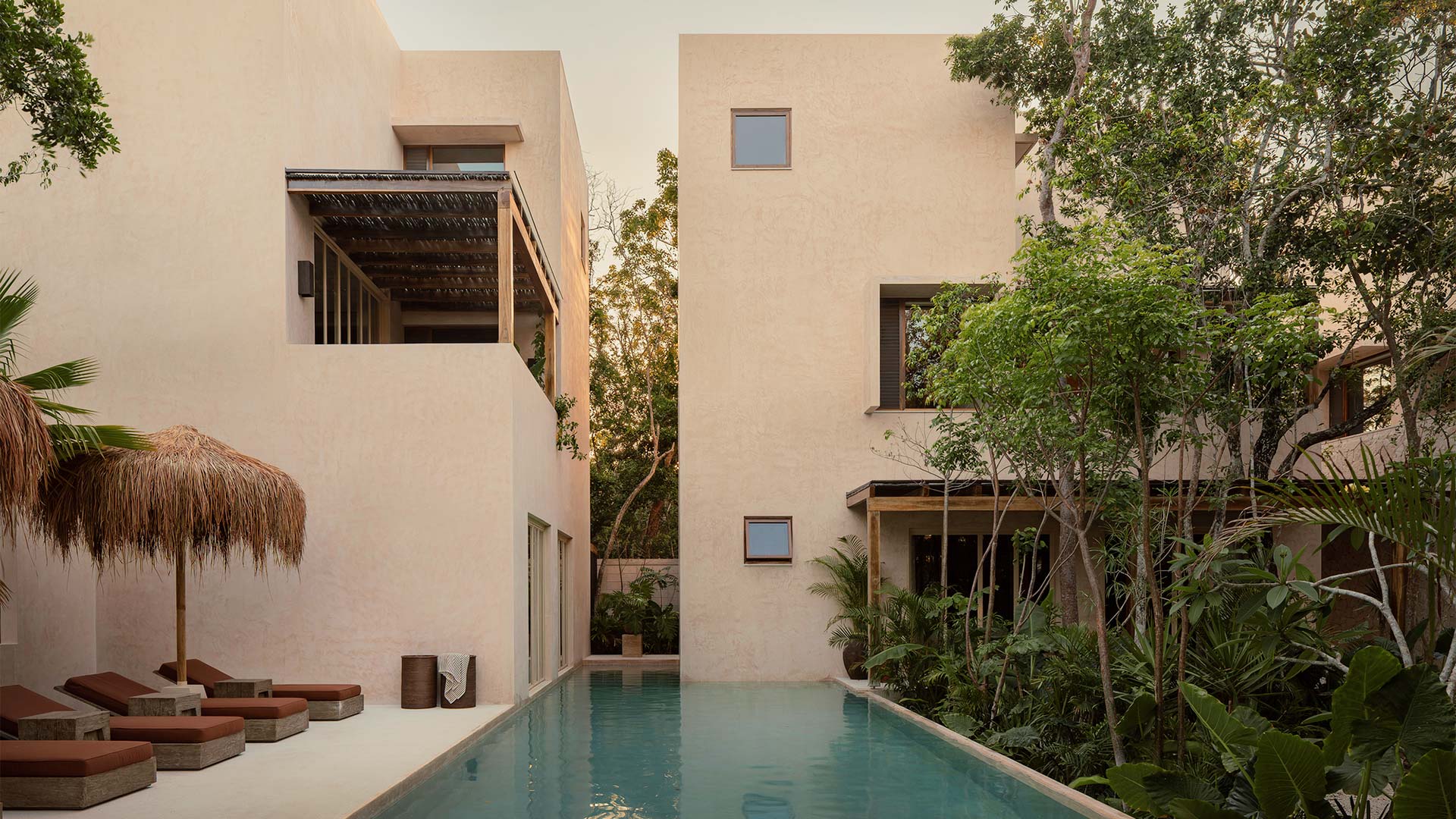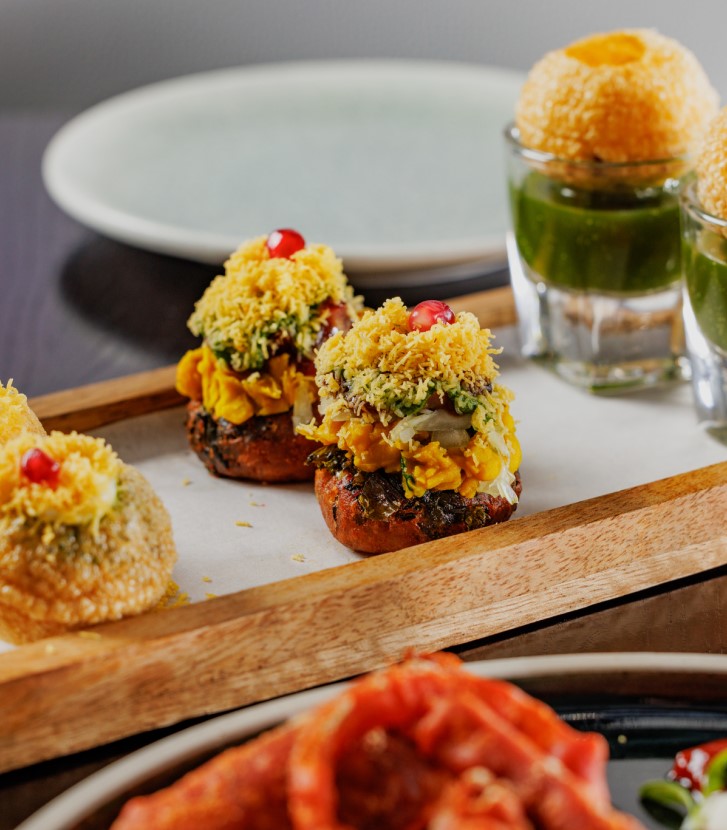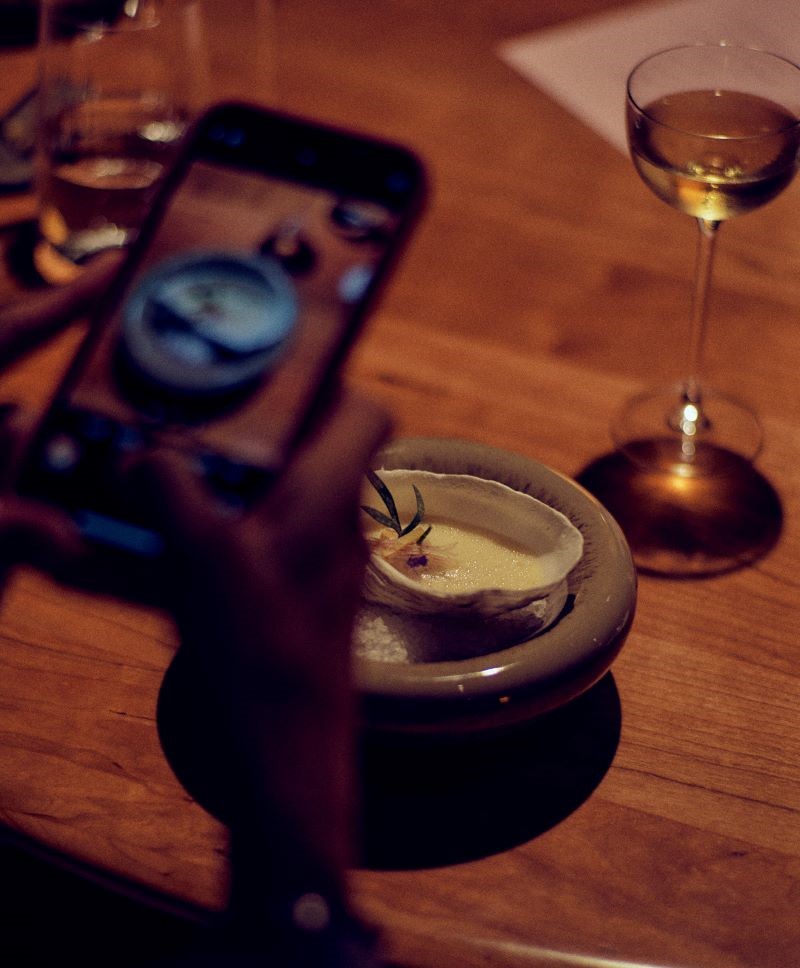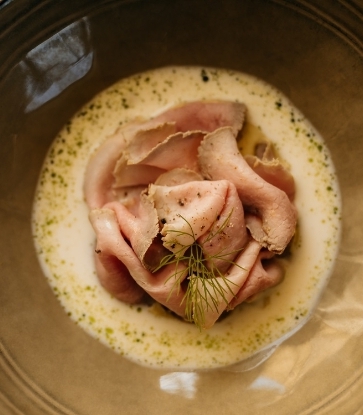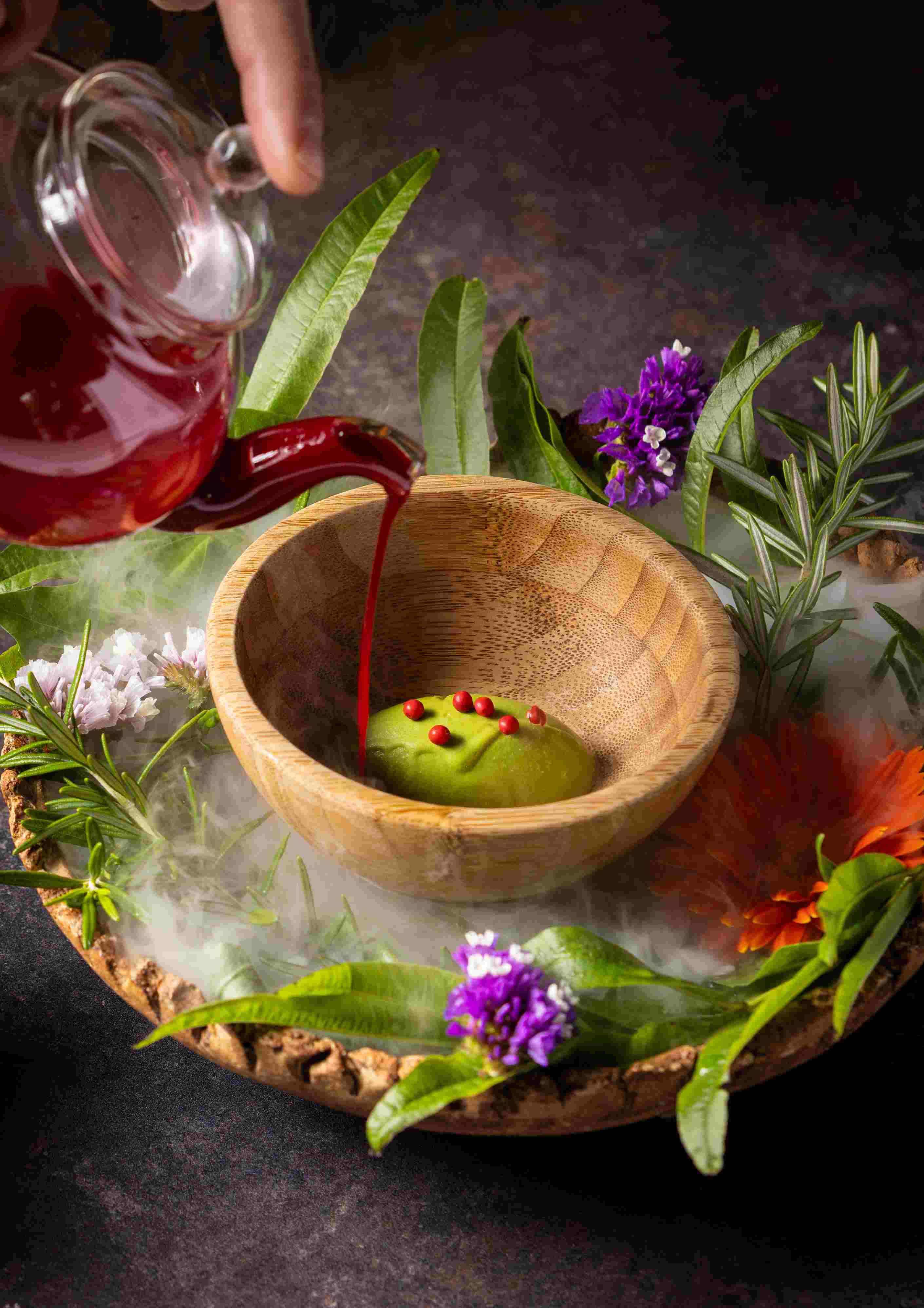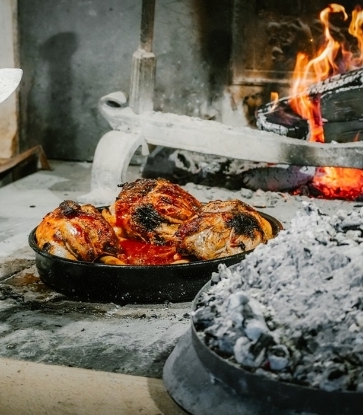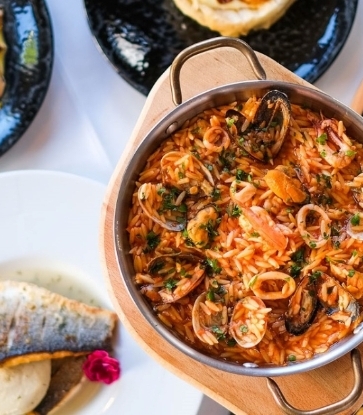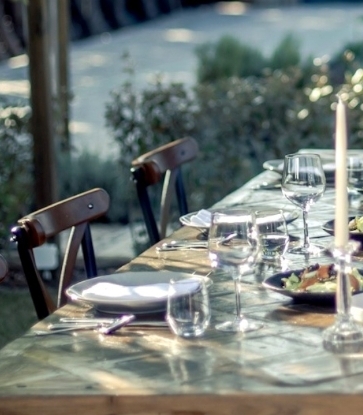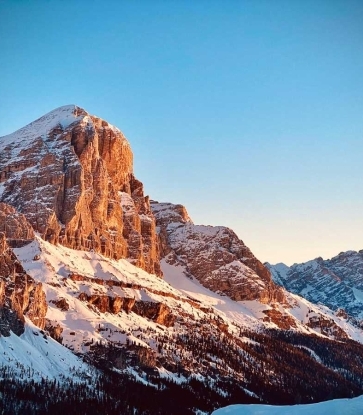The province of Ciudad Real—nestled in La Mancha, the heart of the Iberian Peninsula—is an ideal destination for discovering Spain's nature, heritage, and literary legacy. Here, diverse ecosystems coexist: volcanoes, olive groves, vineyards, and saffron fields, alongside castles of the Order of Calatrava, prehistoric sites, and the iconic windmills that Cervantes' noble knight once battled.
The landscape of Castilla-La Mancha is an intricate patina, brought to life in Golden Age theater and vividly showcased in the Corral de Comedias of Almagro. This rich backdrop is complemented by warm local hospitality and a gastronomic culture that celebrates simplicity and high-quality, honest ingredients.
Throughout Ciudad Real, MICHELIN-selected restaurants reinterpret ancestral recipes, adding contemporary touches. Meanwhile, artisanal cheese producers and wineries demonstrate deep respect for Manchego traditions. It’s no wonder this tapestry of landscapes, flavors, and customs inspired the musings of Don Quixote, one of literature’s most enduring figures.
If you’re ready to embark on a Manchego adventure, here are ten ways to experience the province of Ciudad Real.
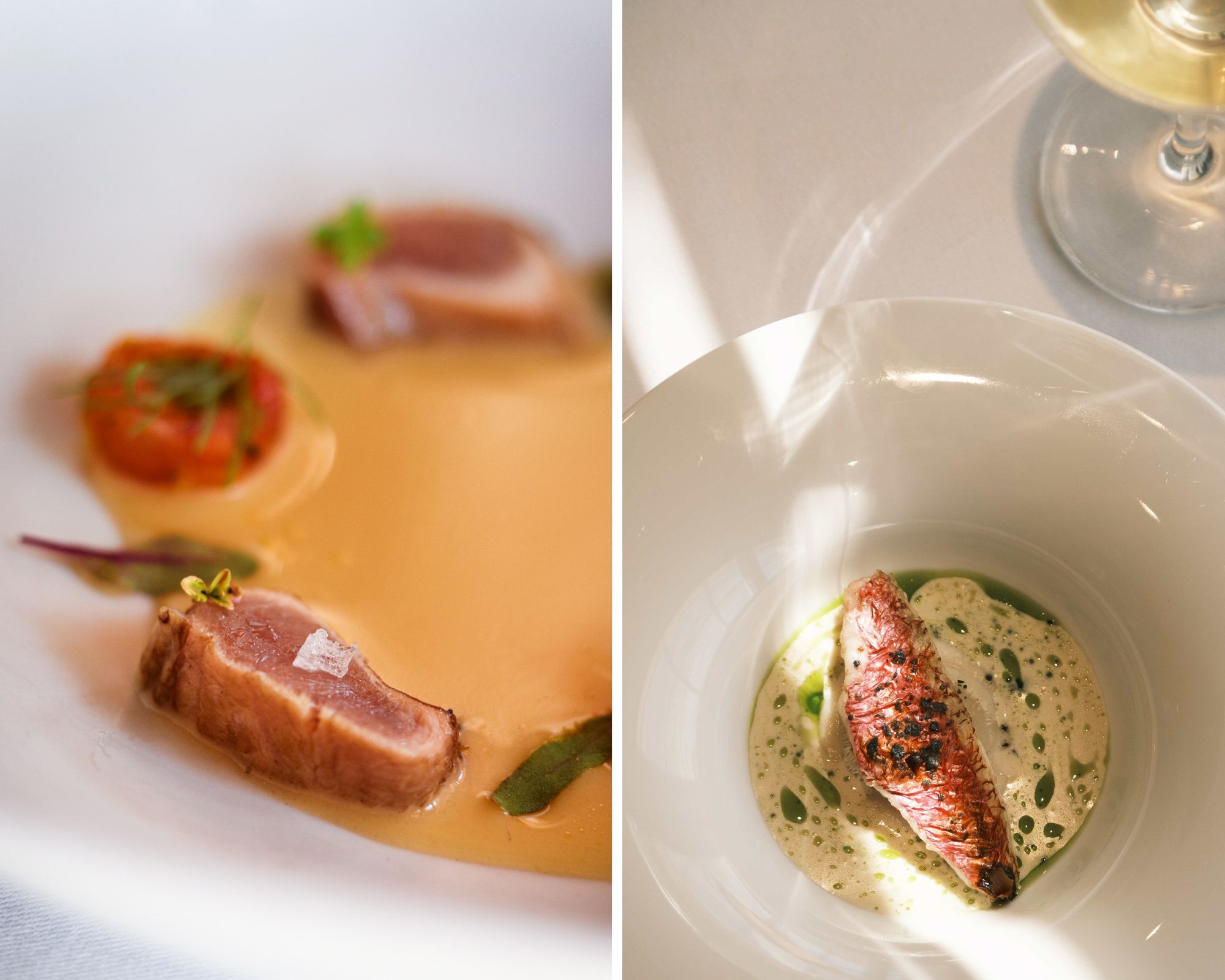
1. Discovering Manchego Gastronomy Excellence
As the melancholy knight declared in Don Quixote, “forget your disappointments with bread in hand.” To embrace his words wholeheartedly, explore our selection of restaurants in Ciudad Real.In Torre de Juan Abad, to the southeast of the province, you’ll find an excellent establishment: Coto de Quevedo. Within the hotel of the same name, the restaurant is split into two projects: Evolución (boasting a MICHELIN Star) and Origen (recommended by the Guide). The former, with views of the Manchego countryside, celebrates local products and the flavors of the surrounding Campo de Montiel region. The restaurant's unique selling point is its devotion to game products (partridge, wild boar, rabbit, roe deer) and its commitment to the environment.
Once in Tomelloso, One-MICHELIN-Starred Epílogo. This venue showcases the new Manchego avant-garde cuisine through small bites, crafted by chef Rubén Sánchez-Camacho. It's an invitation to journey through the tales of the Guadiana via ingredients and recipes from each region its waters touch, from Castilla-La Mancha to Andalucía. A must-try: Buñuelo de sopas de ajo.
For diners looking to explore the area's gastronomic roots, a charming restaurant awaits: Mesón Octavio. Here, diners immerse themselves in traditional family cooking, with utmost care in dishes like Pisto manchego, Migas del Pastor & Happy Hen Eggs, or Wild Boar Meatballs. At an accessible price point (recognized with a Bib Gourmand), this family-run locale, overseen by three siblings, is a lesson in the power of cooking that evokes memories and emotions.
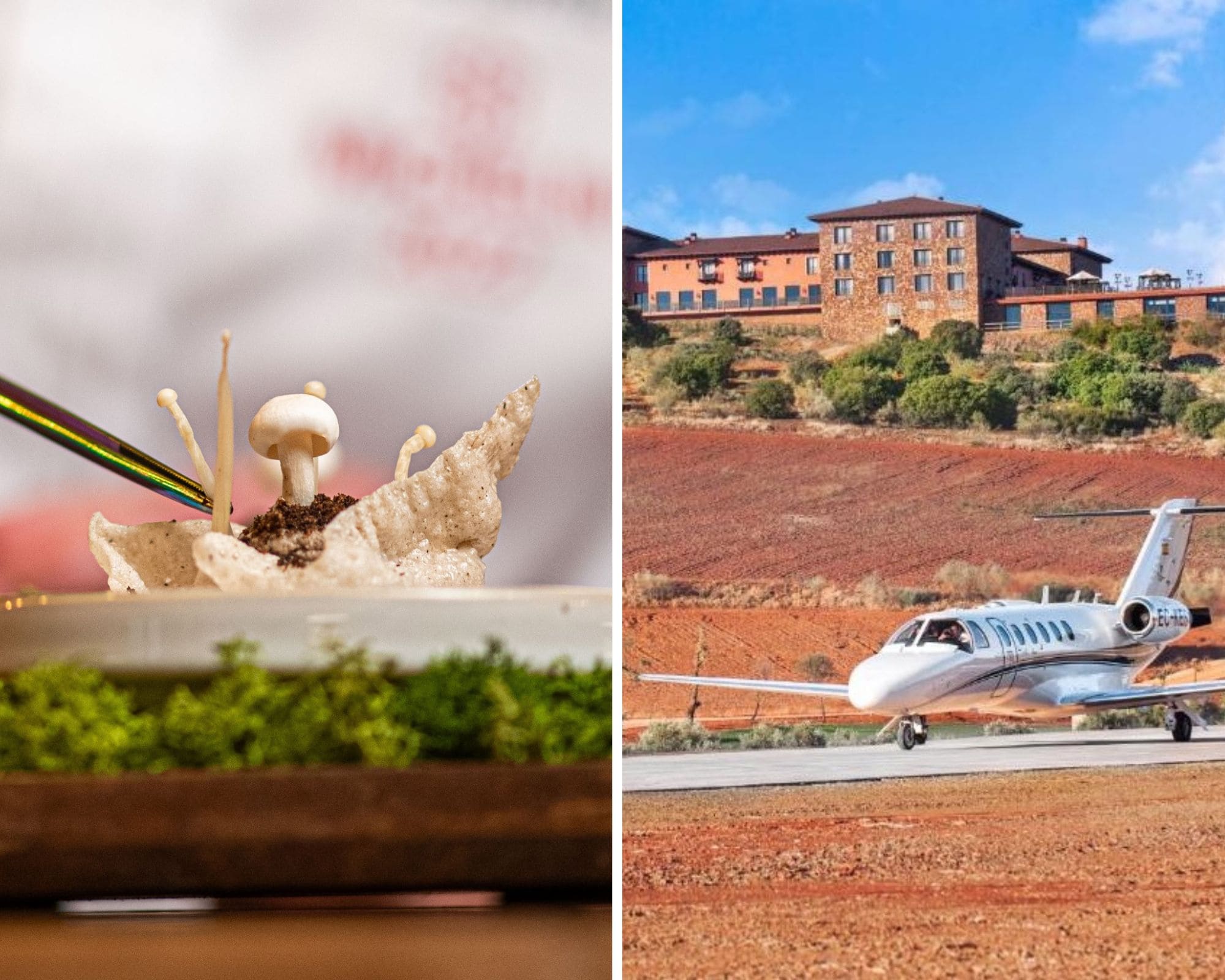
2. Savor a MICHELIN Star and Sleep in an Exclusive Country Club
Another highly recommended place in the province of Ciudad Real is Hotel La Caminera Club de Campo, which among its unique services offers an exclusive hunting area, a nine-hole golf course, a spa with olive oil treatments, and even a private jet runway.In Torrenueva, this cozy lodging stands out for its exceptional onsite restaurant, Retama. The MICHELIN Star venue, headed by chef Miguel Ángel Expósito, leans into the culinary legacy of traditional Manchego recipes, infused with Andalusian touches due to the chef’s Sevillian origins. The restaurant offers three tasting menus, one of which focuses on local game products
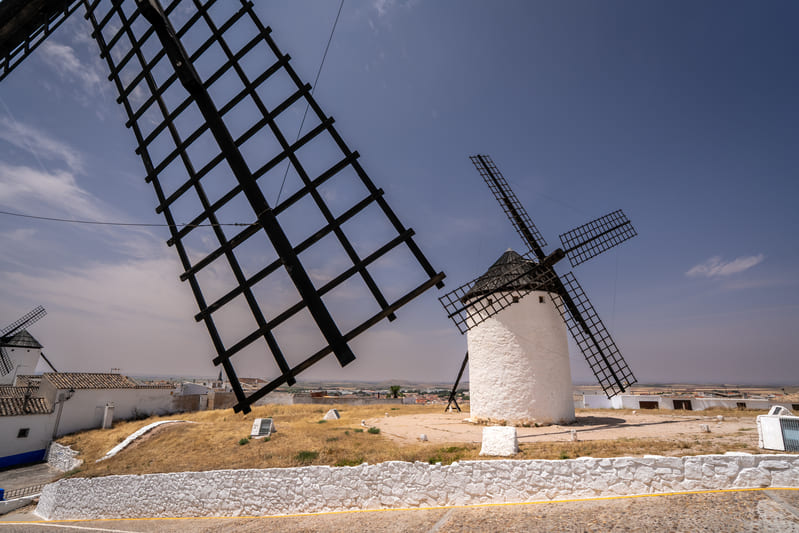
3. Campo de Criptana: Following in Don Quixote’s Footsteps
In the heart of La Mancha lies a place wrapped in magic, painted in white and blue: Campo de Criptana, known as the 'Land of Giants' for its emblematic windmills. These are the very mills against which Don Quixote famously battled, mistaking them for giants in one of Spanish literature’s most celebrated chapters. Declared a Cultural Interest Site, its 34 mills allow travelers to explore the traditional milling process—sometimes even at night—a journey that transports you directly back in time.In Campo de Criptana, bordering the provinces of Toledo and Cuenca, it’s also essential to stroll through its picturesque Albaicín neighborhood, nestled between the Sierra de los Molinos and the historic center. Here, intricate alleyways wind past steep slopes, low white houses with blue-anise bases, reddish Arab-style rooftops, and wrought-iron bars that preserve the Manchego spirit perfectly.
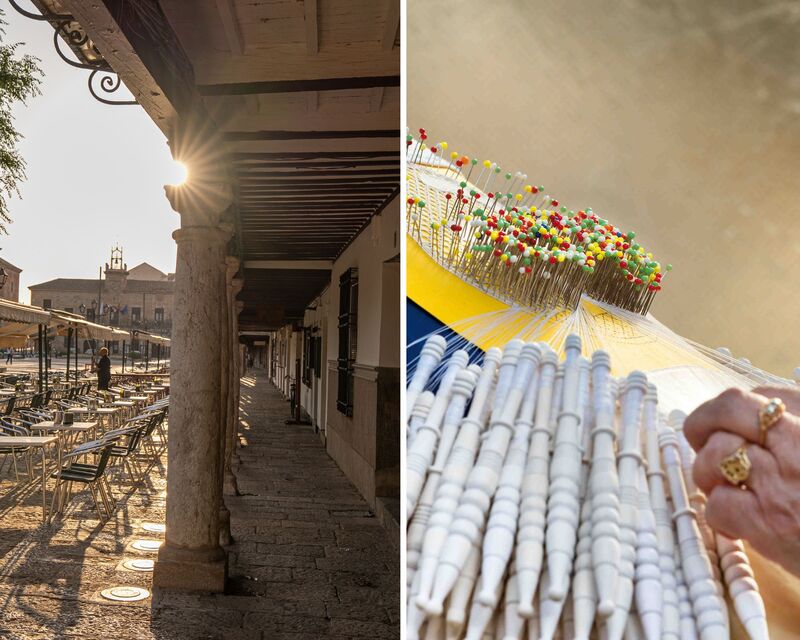
4. Almagro: Epicenter of Classical Theater, Bobbin Lace, and Eggplants
If there’s a place in Spain that treasures the exceptional theatrical heritage of the Golden Age, it’s Almagro. Famous for its Corral de Comedias, a 17th-century theater that retains its original beauty and structure, this locality in the Campo de Calatrava boasts a historic-artistic ensemble that merits a visit. Its palaces, churches, convents, uniquely charming courtyards, Main Square, and the National Museum of Theater Arts, form the setting of this medieval village—the third most visited in Castilla-La Mancha—that annually hosts the prestigious International Classical Theater Festival.Traversing its streets, you might be surprised by the characteristic rhythmic sound: bobbin lace, emblematic crafts tied to the area. In the plaza or any corner of the municipality, watch women work with this technique that dates back to the 16th century.
Here, you'll find menus with the Almagro eggplant—made with an indigenous pickling method with Arab roots—and the typical cross-shaped bread, a local treat and a must-try.
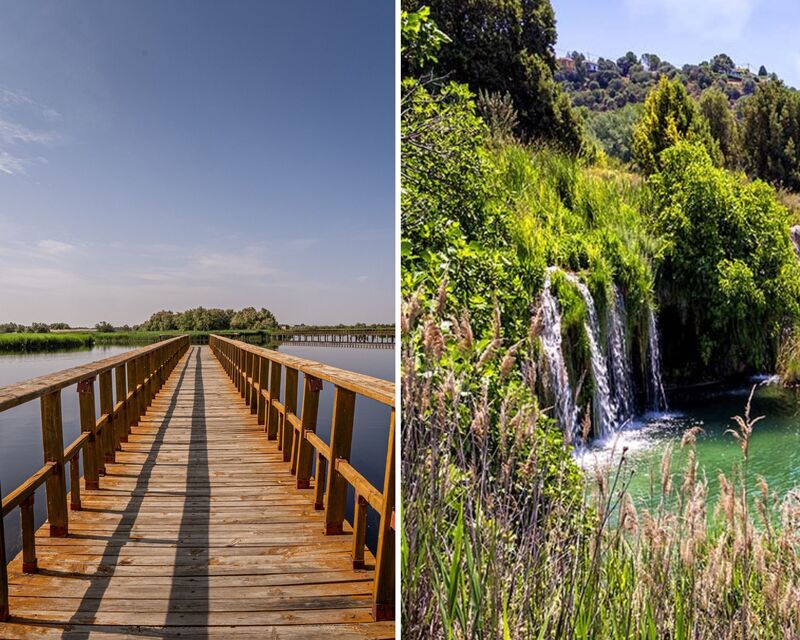
5. Between Wetlands, Lakes, and Volcanoes: Nature in Ciudad Real
The nature throughout the province of Ciudad Real is as rich as it is varied. Las Tablas de Daimiel is a wetland declared a National Park in 1973 and a Biosphere Reserve in 1981. The last representative of an ecosystem known as "fluvial tables," formed by the overflow of the Guadiana and Cigüela rivers, this area hosts a huge variety of flora and fauna species. Besides its historic record in the count of waterfowl, this year marks the first breeding of common flamingos within the park.To the east, check out Lagunas de Ruidera, one of the most astounding places in Spain. Its fifteen lagoons, with transparent and intense turquoise waters, are interconnected, forming waterfalls and jumps, surrounded by extraordinary biological and landscape richness. It's an ideal setting for kayaking, adventure sports, or simply strolling at sunset.
For geology enthusiasts, especially those interested in volcanoes, in the Campo de Calatrava, awaits Geoparque Volcanes de Calatrava, a stunning natural heritage site with guided tours.
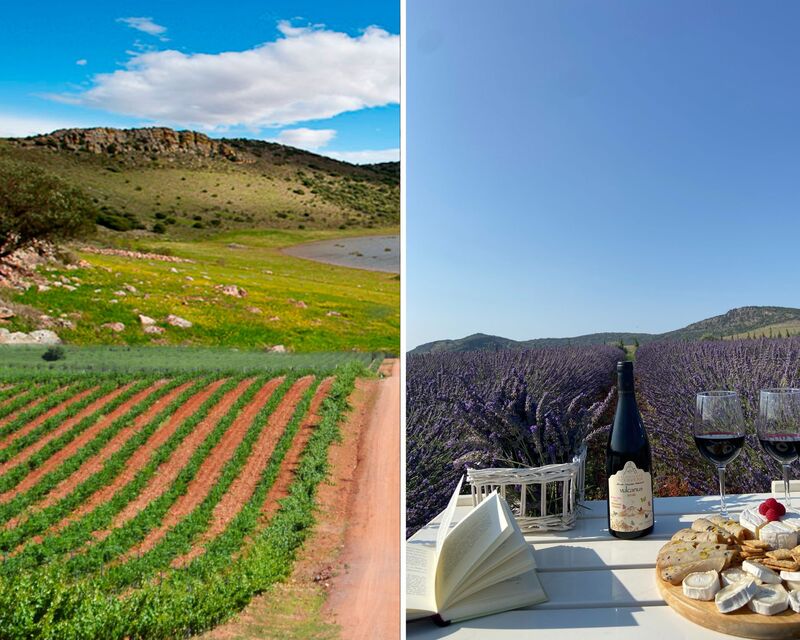
6. Experiencing a Winemaking Tradition Dating Back to Roman Times
La Mancha is a land of wide horizons, without major elevations, with a deep winemaking heritage that has made it a cradle of high-quality wines. The terroir of the Manchego plain, with its calcareous soils, is especially suited for full-bodied red wines, ideal for aging. Vineyard cultivation was already common during Roman times, and the D.O. La Mancha keeps that millenary tradition alive, while also holding the title of the most extensive wine-growing area in the world. Valdepeñas also boasts its own D.O., recognized for its simple yet interesting wines, and for its Wine Museum, offering travelers a journey through the region’s history and underground wineries.Among its numerous wineries, Encomienda de Cervera stands out, located in a unique volcanic landscape at 800 meters altitude. Here, excellent volcanic organic wines and olive oils are crafted. Among the possible visits, descending into one of the volcanoes within the estate, Maar de la Hoya de Cervera, declared a Natural Monument in 1999, is worthwhile. Another notable example is Castiblanque Winery, with 120 hectares of its own vineyard and a complete tourism program including tastings, outdoor meals, and many more experiences to choose from.
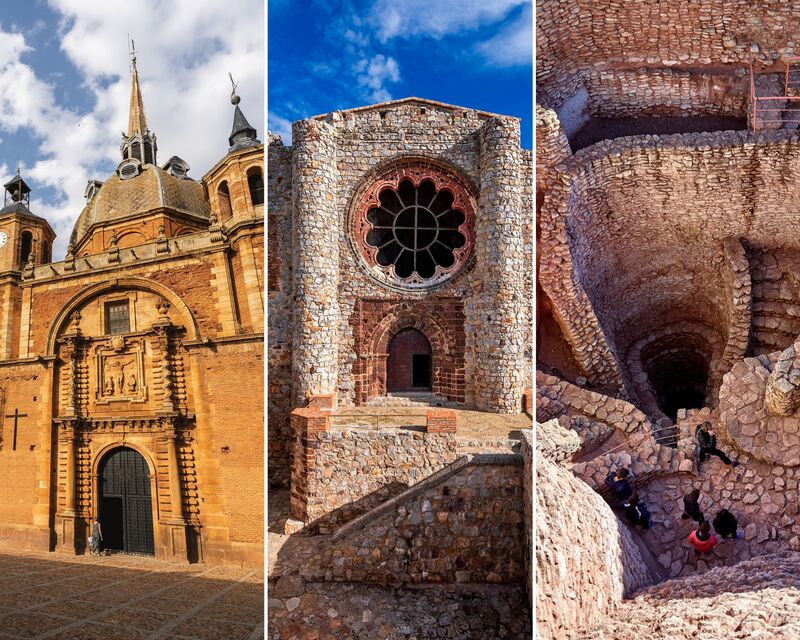
7. Castles, Archaeological Sites, and Historic Towns
La Mancha is a contemporary city that's solidly rooted in history and tradition. This heritage is displayed in three emblematic locations: San Carlos del Valle, the Castle of Calatrava La Nueva, and the prehistoric site of Motilla del Azuer.The first stop is a charming village of just over a thousand inhabitants, known as "the Manchego Vatican," in the heart of Campo de Montiel. San Carlos del Valle showcases monumental grandeur, visible in its impressive Main Square, considered one of the most beautiful in Spain, and in the 18th-century Baroque-style church of Cristo del Valle.
Next, head to the Castle of Calatrava La Nueva (in Aldea del Rey), an imposing fortress, historically the headquarters of the Order of Calatrava. Its 46,000 square meters forged in stone offer breathtaking views over the Manchego landscape, transporting visitors directly to medieval times.
Finally, Motilla del Azuer is an exceptional site with more than 4,000 years of history. Situated near Daimiel, it’s considered the oldest well in the peninsula and provides an exceptional example of Bronze Age "motillas."
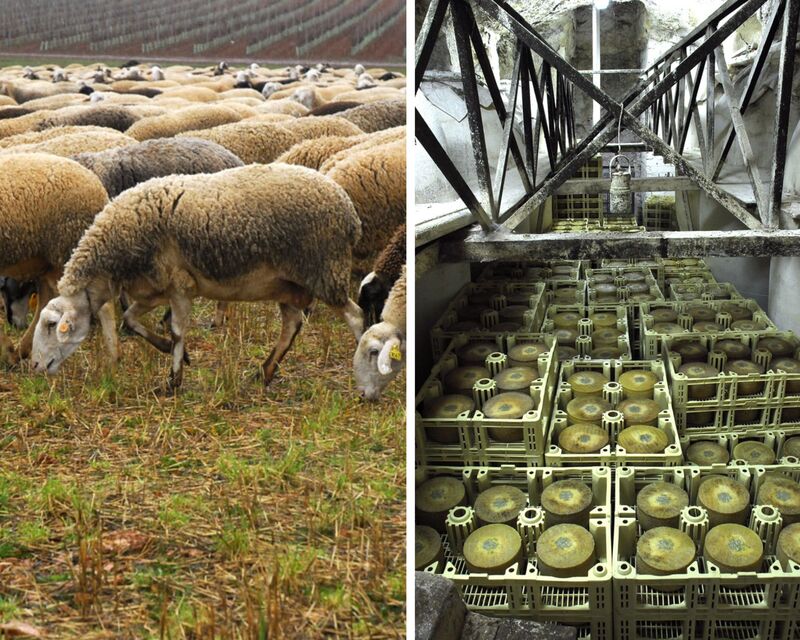
8. Meeting Master Cheesemakers and Discovering Manchego Cheese
It's hard to find something more authentic than Manchego cheese. This culinary jewel from the province of Ciudad Real, a staple of Spanish gastronomy, is made with Manchega sheep's milk, matured at a minimum of 30 days, plus expertise that's been handed down for centuries.The Protected Designation of Origin (PDO) ensures each piece meets the quality standards that have made it globally renowned. Visit the headquarters of the award-winning Quesos La Casota (in La Solana), or accompanying the master cheesemaker at Finca La Granja to uncover the secrets behind each creation.

9. The Perfect Taste: Pastelería La Rosa
Touring the province of Ciudad Real and not sampling the delights from Pastelería La Rosa would be a true gastronomic crime. In this Alcázar de San Juan gem works Jesús Quirós, Spain’s current best chocolatier and winner of the Spanish World Chocolate Master 2025. He represents the fifth generation of an extraordinary family business, where the ancestral recipe book lives on in treats like Honey Pestiños, Manchego Mantecados, Mazapán, Angel Hair Empanadillas, and Puff Pastries—all handcrafted daily (during peak season, up to 150 different products are prepared).A curiosity shared by Quirós: the recipe for their heavenly pastry cream, featuring a unique secret ingredient known to no one, isn’t written down—the original was burned—but has been passed down through generations like a closely guarded treasure.
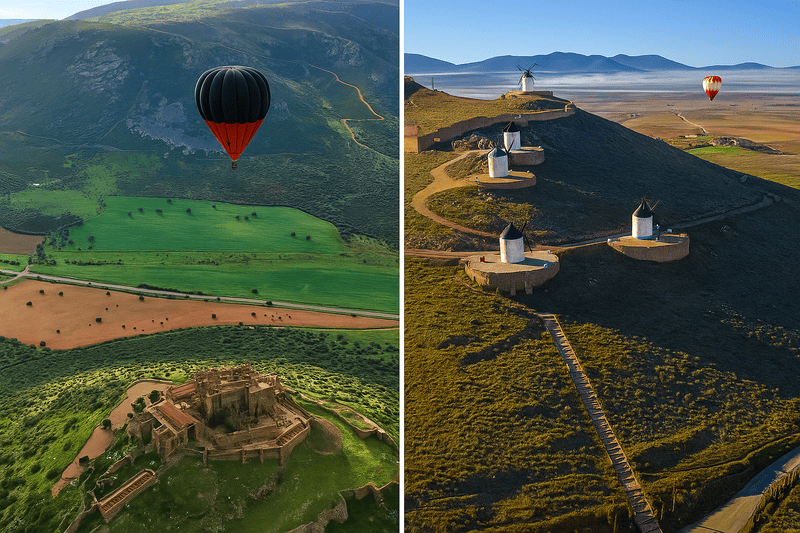
10. The Land of Don Quixote from a Bird’s Eye View
Exploring the province of Ciudad Real means savoring its most emblematic products, wandering through historic towns, uncovering the keys to its past, and embracing its natural landscapes. But there’s more: you can end your visit with a truly unique perspective—a hot air balloon ride.At sunrise, the view from above is unforgettable, whether starting from the Castle of Calatrava La Nueva or another location. Globos La Mancha welcomes travelers’ suggestions—weather and wind permitting—and offers the chance to explore the Manchego landscape from the skies. It’s an extraordinary experience, providing a full 360° view of the land that inspired Don Quixote’s adventures, the region’s most famous ambassador.
Related articles
Hero image: © Angelo D'Amico/iStock
